| ________________
CM . . .
. Volume XVIII Number 35. . . .May 11, 2012

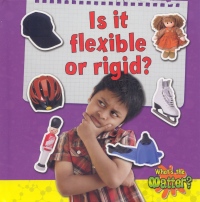 |
Is It Flexible or Rigid? (What’s the Matter?).
Sheila Fletcher.
St. Catharines, ON: Crabtree, 2012.
24 pp., pbk. & hc., $7.95 (pbk.), $18.36 (RLB.).
ISBN 978-0-7787-2054-6 (pbk.), ISBN 978-0-7787-2047-8 (RLB).
Subject Headings:
Elasiticity-Juvenile literature.
Matter-Properties-Juvenile literature.
Grades 1-2 / Ages 6-7.
Review by Gail Hamilton.
**½ /4
|
| |
|
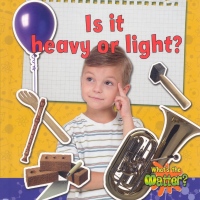 |
Is It Heavy or Light? (What’s the Matter?).
Susan Hughes.
St. Catharines, ON: Crabtree, 2012.
24 pp., pbk. & hc., $7.95 (pbk.), $18.36 (RLB.).
ISBN 978-0-7787-2055-3 (pbk.), ISBN 978-0-7787-2048-5 (RLB).
Subject Headings:
Weight (Physics)-Juvenile literature.
Matter-Properties-Juvenile literature.
Grades 1-2 / Ages 6-7.
Review by Gail Hamilton.
**½ /4
|
| |
|
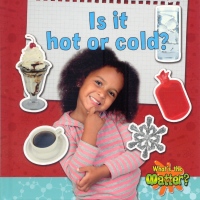 |
Is It Hot or Cold? (What’s the Matter?).
Susan Hughes.
St. Catharines, ON: Crabtree, 2012.
24 pp., pbk. & hc., $7.95 (pbk.), $18.36 (RLB.).
ISBN 978-0-7787-2056-0 (pbk.), ISBN 978-0-7787-2049-2 (RLB).
Subject Headings:
Heat-Juvenile literature.
Cold-Juvenile literature.
Temperature-Juvenile literature.
Matter-Properties-Juvenile literature.
Grades 1-2 / Ages 6-7.
Review by Gail Hamilton.
**½ /4
|
| |
|
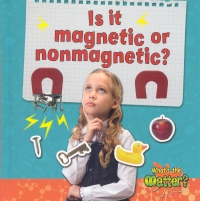 |
Is It Magnetic or Nonmagnetic? (What’s the Matter?).
Trudy Rising.
St. Catharines, ON: Crabtree, 2012.
24 pp., pbk. & hc., $7.95 (pbk.), $18.36 (RLB.).
ISBN 978-0-7787-2057-7 (pbk.), ISBN 978-0-7787-2050-8 (RLB).
Subject Headings:
Magnetism-Juvenile literature.
Matter-Properties-Juvenile literature.
Grades 1-2 / Ages 6-7.
Review by Gail Hamilton.
**½ /4
|
| |
|
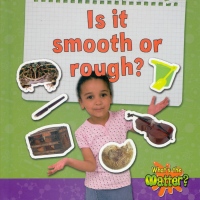 |
Is It Smooth or Rough? (What’s the Matter?).
Heather Rising.
St. Catharines, ON: Crabtree, 2012.
24 pp., pbk. & hc., $7.95 (pbk.), $18.36 (RLB.).
ISBN 978-0-7787-2058-4 (pbk.), ISBN 978-0-7787-2051-5 (RLB).
Subject Headings:
Materials-Texture-Juvenile literature.
Friction-Juvenile literature.
Matter-Properties-Juvenile literature.
Grades 1-2 / Ages 6-7.
Review by Gail Hamilton.
**½ /4
|
| |
|
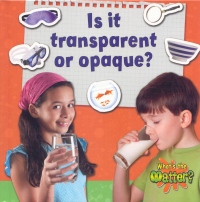 |
Is It Transparent or Opaque? (What’s the Matter?).
Susan Hughes.
St. Catharines, ON: Crabtree, 2012.
24 pp., pbk. & hc., $7.95 (pbk.), $18.36 (RLB.).
ISBN 978-0-7787-2059-1 (pbk.), ISBN 978-0-7787-2052-2 (RLB).
Subject Headings:
Transparency-Juvenile literature.
Opacity (Optics)-Juvenile literature.
Matter-Properties-Juvenile literature
Grades 1-2 / Ages 6-7.
Review by Gail Hamilton.
**½ /4
|
| |
|

excerpt:
Some materials let light pass through them and others do not. This is a property of the material.
If light can pass through a material, then we can see through it.
Materials we can see through are called transparent.
A magnifying glass is transparent.
So are eyeglasses and windows. (From Is it Transparent or Opaque?)
Designed to introduce very young readers to the physical properties of various materials, the new “What’s the Matter?” series explains some scientific concepts in a very simple way. Readers use their observation skills, their five senses and prior knowledge to compare and contrast two opposite physical properties- heavy/light, hot/cold, smooth/rough, etc. The books are “interactive” in that they pose questions for readers to ponder or ask them to examine photographs of objects to find the answers. Each of the titles has 10 short chapters. The first few pages in the series are very similar, explaining the words “matter”, “mass” and ‘properties”. Wherever possible, the titles give examples of the uses for many of the objects that are described.
The books’ smaller size, large simple text font, repetitive phrases and colourful covers are suitable for beginning readers. Backgrounds are bright solid colours which add punch to the text and the accompanying photographs. Both the text and the photos provide examples from a child’s everyday life. A table of contents and a combination “Words to Know and Index” are included. The “words to know” does not really serve as a glossary; it merely provides several page numbers for the entries and their accompanying photos. It is doubtful that children would use this section as there are just too many pages referenced. The final page is meant for adults. It lists the objectives of the specific title, questions to ask, and describes an extension activity related to the book’s topic. This series would be useful to a teacher in a primary classroom.
Is It Flexible or Rigid? shows readers the benefits of both flexible and rigid objects, depending on the situation. Garden hoses, spider webs and hair elastics need to be flexible, but monkey bars, baseball bats and crutches need to be rigid. This title also explains that sometimes objects must be a little of both, an example being a tower or a bridge. These need to be rigid in order to be strong and to support weight, but they must also be slightly flexible so that they sway a bit in the wind to prevent them from being pushed over. And some objects start off rigid and become flexible only after they are altered by heat or moisture, an example being pasta noodles.
The concept of weight is featured in Is It Heavy or Light? The size of an object does not always determine if it is heavy or light, as would be the case in a large hot air balloon actually being very light, while a hand weight is quite heavy for its size. People can often tell if something is heavy or light by the materials from which it is made. In this title, readers will learn about weighing objects on a scale and using a balance to compare two objects.
Is It Hot or Cold? shows readers how temperature is a kind of measurement that tells how hot or cold something is. The text asks children to look for clues to figure out the temperature of objects. Some examples are frost on a window, melted butter in a frying pan and ice crystals on frozen peas. The concept of changes in matter is introduced by explaining how water can change into ice when it is cooled, and back to water when the ice melts.
Magnets have many uses, such as in can openers and travel games, and for picking up heavy objects or affixing objects to another surface. Is It Magnetic or Nonmagnetic? describes four different types of magnets- bar, ring, horseshoe and ball- as well as the two poles. The terms “attract” and “repel” are introduced. Readers will have fun trying the extended activity mentioned on the last page. They can design a maze that goes through a forest and leads to a special tree, a winding road that leads to a gas station, or a river that a fish has to swim through in order to get to the ocean. Once children have designed and coloured their maze on a piece of cardboard, other students in the class can use a magnet under the cardboard to move a metal playing piece (a squirrel, a tiny car or a fish) through the maze.
Texture and friction are the ideas mentioned in Is It Smooth or Rough? Smooth surfaces help objects to move quickly- like skates gliding on ice- while rough surfaces slow things down. A few “rough” examples are treads on running shoes which prevent the wearer from slippingand sand sprinkled on icy roads to prevent vehicles from skidding and pedestrians from falling. Readers are asked to look at photos of a half dozen objects to figure out what purpose the smoothness or roughness of the object serves. A smooth metal teaspoon, for instance, helps liquids to slide off more easily, while a heavily textured welcome mat is perfect for wiping off muddy shoes at the front door.
Is It Transparent or Opaque? actually introduces three terms: transparent, opaque and translucent. Readers are given examples of objects which allow light to pass through them (clear window glass, eyeglasses and a magnifying glass), objects which do not allow any light to pass through (a solid door, curtains and a sleep mask), and objects which only allow some light to shine through (coloured tissue paper, jelly and balloons). Whether an object is transparent, opaque or translucent will also determine whether or not it casts a shadow. As an activity, readers can use a flashlight to classify various objects in their classroom or home as transparent, opaque or translucent.
Basically, the “What’s the Matter?” series is just a simple introduction to some of the properties of matter. As with any primary school age children, their examining and manipulating real objects goes a long way to reinforce scientific concepts. These titles could find a place in a classroom that is rich with “hands-on” materials.
Recommended.
Gail Hamilton is a former teacher-librarian in Winnipeg, MB.

To comment
on this title or this review, send mail to cm@umanitoba.ca.
Copyright © the Manitoba Library Association. Reproduction for personal
use is permitted only if this copyright notice is maintained. Any
other reproduction is prohibited without permission.
NEXT REVIEW | TABLE OF CONTENTS FOR THIS ISSUE
- May 11, 2012.
AUTHORS | TITLES | MEDIA REVIEWS | PROFILES | BACK ISSUES | SEARCH | CMARCHIVE | HOME
|





